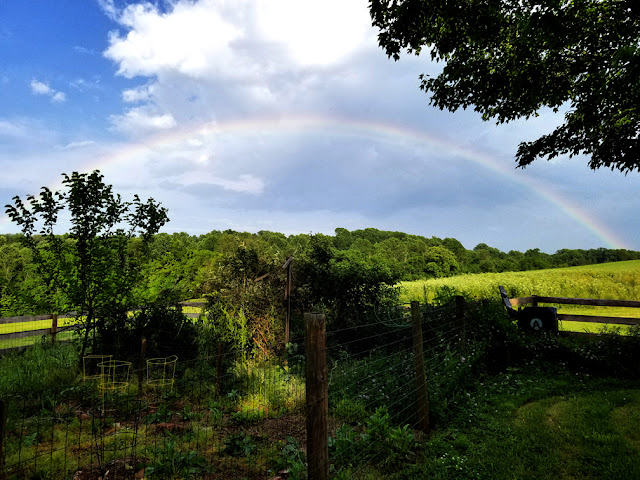While visiting my niece on May 25th in rural Orange, Virginia a late afternoon rainbow appeared attractively framed by backyard trees.
The background clouds are not very dark, so rainbow colors are not as dramatic as they could be.
A few moments before the previous picture was taken colors were slightly more intense.
 The rainbow added extra beauty to the pleasant countryside visible from my niece's house.
The rainbow added extra beauty to the pleasant countryside visible from my niece's house.























